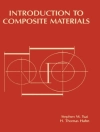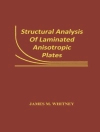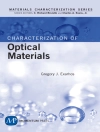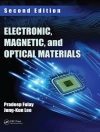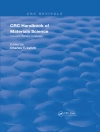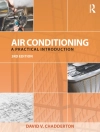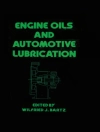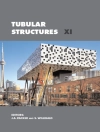Iterative Learning
CONTROL ALGORITHMS AND EXPERIMENTAL BENCHMARKING
Iterative Learning Control Algorithms and Experimental Benchmarking
Presents key cutting edge research into the use of iterative learning control
The book discusses the main methods of iterative learning control (ILC) and its interactions, as well as comparator performance that is so crucial to the end user. The book provides integrated coverage of the major approaches to-date in terms of basic systems, theoretic properties, design algorithms, and experimentally measured performance, as well as the links with repetitive control and other related areas.
Key features:
- Provides comprehensive coverage of the main approaches to ILC and their relative advantages and disadvantages.
- Presents the leading research in the field along with experimental benchmarking results.
- Demonstrates how this approach can extend out from engineering to other areas and, in particular, new research into its use in healthcare systems/rehabilitation robotics.
The book is essential reading for researchers and graduate students in iterative learning control, repetitive control and, more generally, control systems theory and its applications.
Содержание
Preface vii
1 Iterative Learning Control: Origins and General Overview 1
1.1 The Origins of ILC 2
1.2 A Synopsis of the Literature 5
1.3 Linear Models and Control Structures 6
1.3.1 Differential Linear Dynamics 7
1.4 ILC for Time-Varying Linear Systems 9
1.5 Discrete Linear Dynamics 11
1.6 ILC in a 2D Linear Systems/Repetitive Processes Setting 16
1.6.1 2D Discrete Linear Systems and ILC 16
1.6.2 ILC in a Repetitive Process Setting 17
1.7 ILC for Nonlinear Dynamics 18
1.8 Robust, Stochastic, and Adaptive ILC 19
1.9 Other ILC Problem Formulations 21
1.10 Concluding Remarks 22
2 Iterative Learning Control: Experimental Benchmarking 23
2.1 Robotic Systems 23
2.1.1 Gantry Robot 23
2.1.2 Anthromorphic Robot Arm 25
2.2 Electro-Mechanical Systems 26
2.2.1 Nonminimum Phase System 26
2.2.2 Multivariable Testbed 29
2.2.3 Rack Feeder System 30
2.3 Free Electron Laser Facility 32
2.4 ILC in Healthcare 37
2.5 Concluding Remarks 38
3 An Overview of Analysis and Design for Performance 39
3.1 ILC Stability and Convergence for Discrete Linear Dynamics 39
3.1.1 Transient Learning 41
3.1.2 Robustness 42
3.2 Repetitive Process/2D Linear Systems Analysis 43
3.2.1 Discrete Dynamics 43
3.2.2 Repetitive Process Stability Theory 46
3.2.3 Error Convergence Versus Along the Trial Performance 51
3.3 Concluding Remarks 55
4 Tuning and Frequency Domain Design of Simple Structure ILC Laws 57
4.1 Tuning Guidelines 57
4.2 Phase-Lead and Adjoint ILC Laws for Robotic-Assisted Stroke Rehabilitation 58
4.2.1 Phase-Lead ILC 61
4.2.2 Adjoint ILC 63
4.2.3 Experimental Results 63
4.3 ILC for Nonminimum Phase Systems Using a Reference Shift Algorithm 68
4.3.1 Filtering 74
4.3.2 Numerical Simulations 75
4.3.3 Experimental Results 75
4.4 Concluding Remarks 81
5 Optimal ILC 83
5.1 NOILC 83
5.1.1 Theory 83
5.1.2 NOILC Computation 86
5.2 Experimental NOILC Performance 89
5.2.1 Test Parameters 90
5.3 NOILC Applied to Free Electron Lasers 93
5.4 Parameter Optimal ILC 96
5.4.1 An Extension to Adaptive ILC 98
5.5 Predictive NOILC 99
5.5.1 Controlled System Analysis 104
5.5.2 Experimental Validation 106
5.6 Concluding Remarks 116
6 Robust ILC 117
6.1 Robust Inverse Model-Based ILC 117
6.2 Robust Gradient-Based ILC 123
6.2.1 Model Uncertainty –Case (i) 127
6.2.2 Model Uncertainty –Cases (ii) and (iii) 128
6.3 H∞ Robust ILC 132
6.3.1 Background and Early Results 132
6.3.2 H∞ Based Robust ILC Synthesis 137
6.3.3 A Design Example 142
6.3.4 Robust ILC Analysis Revisited 151
6.4 Concluding Remarks 153
7 Repetitive Process-Based ILC Design 155
7.1 Design with Experimental Validation 155
7.1.1 Discrete Nominal Model Design 155
7.1.2 Robust Design –Norm-Bounded Uncertainty 160
7.1.3 Robust Design – Polytopic Uncertainty and Simplified Implementation 165
7.1.4 Design for Differential Dynamics 170
7.2 Repetitive Process-Based ILC Design Using Relaxed Stability Theory 170
7.3 Finite Frequency Range Design and Experimental Validation 178
7.3.1 Stability Analysis 178
7.4 HOILC Design 194
7.5 Inferential ILC Design 196
7.6 Concluding Remarks 202
8 Constrained ILC Design 203
8.1 ILC with Saturating Inputs Design 203
8.1.1 Observer-Based State Control Law Design 203
8.1.2 ILC Design with Full State Feedback 209
8.1.3 Comparison with an Alternative Design 210
8.1.4 Experimental Results 215
8.2 Constrained ILC Design for LTV Systems 219
8.2.1 Problem Specification 219
8.2.2 Implementation of Constrained Algorithm 1 – a Receding Horizon Approach 223
8.2.3 Constrained ILC Algorithm 3 224
8.3 Experimental Validation on a High-Speed Rack Feeder System 226
8.3.1 Simulation Case Studies 226
8.3.2 Other Performance Issues 230
8.3.3 Experimental Results 236
8.3.4 Algorithm 1: QP-Based Constrained ILC 236
8.3.5 Algorithm 2: Receding Horizon Approach-Based Constrained ILC 237
8.4 Concluding Remarks 238
9 ILC for Distributed Parameter Systems 241
9.1 Gust Load Management for Wind Turbines 241
9.1.1 Oscillatory Flow 246
9.1.2 Flow with Vortical Disturbances 251
9.1.3 Blade Conditioning Measures 253
9.1.4 Actuator Dynamics and Trial-Varying ILC 254
9.1.5 Proper Orthogonal Decomposition-Based Reduced Order Model Design 257
9.2 Design Based on Finite-Dimensional Approximate Models with Experimental Validation 266
9.3 Finite Element and Sequential Experimental Design-based ILC 280
9.3.1 Finite Element Discretization 281
9.3.2 Application of ILC 283
9.3.3 Optimal Measurement Data Selection 284
9.4 Concluding Remarks 288
10 Nonlinear ILC 289
10.1 Feedback Linearized ILC for Center-Articulated Industrial Vehicles 289
10.2 Input–Output Linearization-based ILC Applied to Stroke Rehabilitation 293
10.2.1 System Configuration and Modeling 293
10.2.2 Input–Output Linearization 296
10.2.3 Experimental Results 299
10.3 Gap Metric ILC with Application to Stroke Rehabilitation 302
10.4 Nonlinear ILC – an Adaptive Lyapunov Approach 310
10.4.1 Motivation and Background Results 311
10.5 Extremum-Seeking ILC 320
10.6 Concluding Remarks 322
11 Newton Method Based ILC 323
11.1 Background 323
11.2 Algorithm Development 324
11.2.1 Computation of Newton-Based ILC 326
11.2.2 Convergence Analysis 327
11.3 Monotonic Trial-to-Trial Error Convergence 328
11.3.1 Monotonic Convergence with Parameter Optimization 329
11.3.2 Parameter Optimization for Monotonic and Fast Trial-to-Trial Error Convergence 330
11.4 Newton ILC for 3D Stroke Rehabilitation 331
11.4.1 Experimental Results 336
11.5 Constrained Newton ILC Design 337
11.6 Concluding Remarks 347
12 Stochastic ILC 349
12.1 Background and Early Results 349
12.2 Frequency Domain-Based Stochastic ILC Design 356
12.3 Experimental Comparison of ILC Laws 364
12.4 Repetitive Process-Based Analysis and Design 378
12.5 Concluding Remarks 387
13 Some Emerging Topics in Iterative Learning Control 389
13.1 ILC for Spatial Path Tracking 389
13.2 ILC in Agriculture and Food Production 394
13.2.1 The Broiler Production Process 395
13.2.2 ILC for FCR Minimization 400
13.2.3 Design Validation 404
13.3 ILC for Quantum Control 406
13.4 ILC in the Utility Industries 410
13.4.1 ILC Design 413
13.5 Concluding Remarks 415
Appendix A 417
A.1 The Entries in the Transfer-Function Matrix (2.2) 417
A.2 Entries in the Transfer-Function Matrix (2.4) 418
A.3 Matrices E1, E2, H1, and H2 for the Designs of (7.36) and (7.37) 419
References 421
Index 437
Об авторе
Professor Eric Rogers, Dr. Bing Chu, Professor Christopher Freeman, and Professor Paul Lewin, University of Southampton, UK


